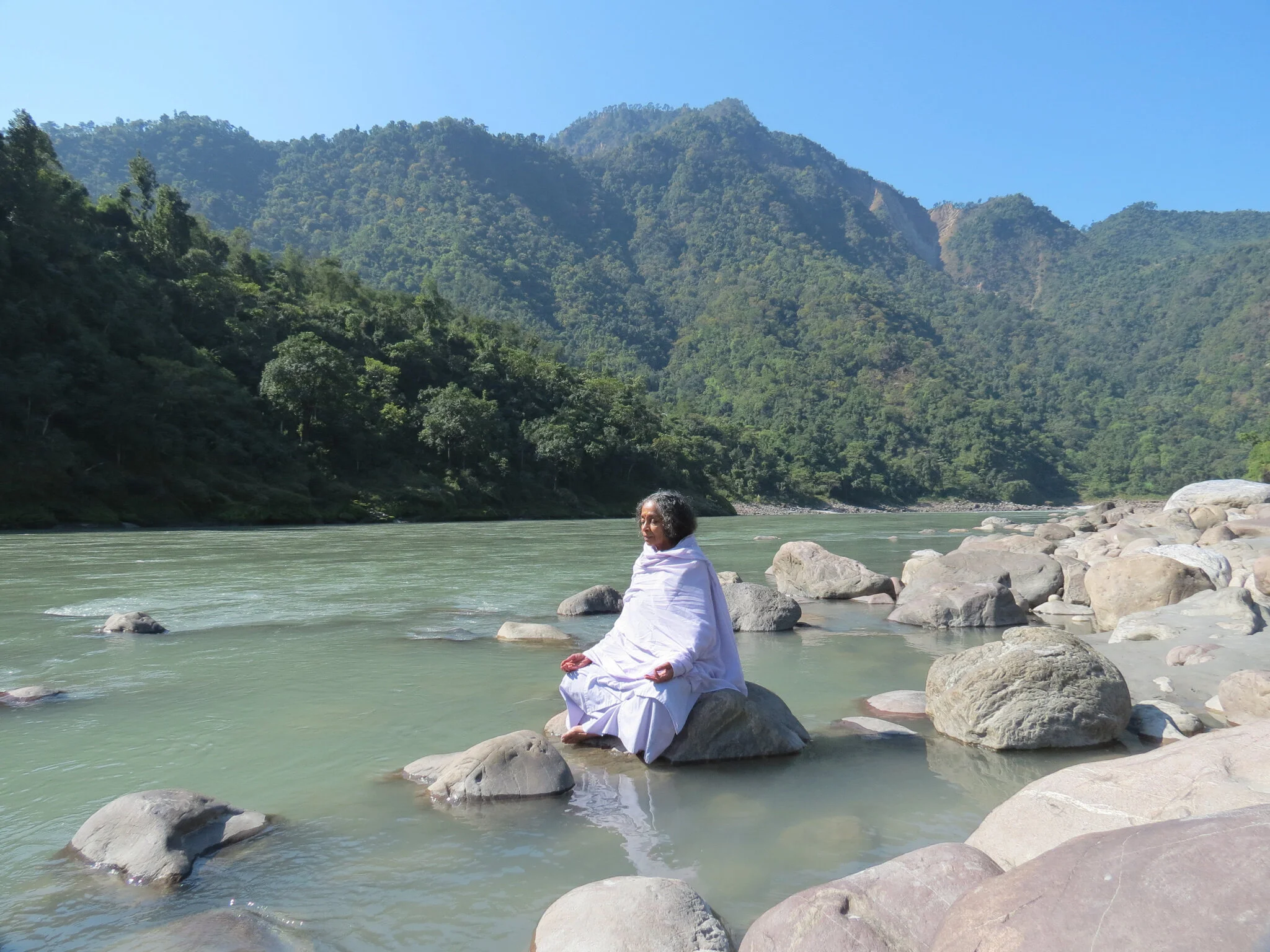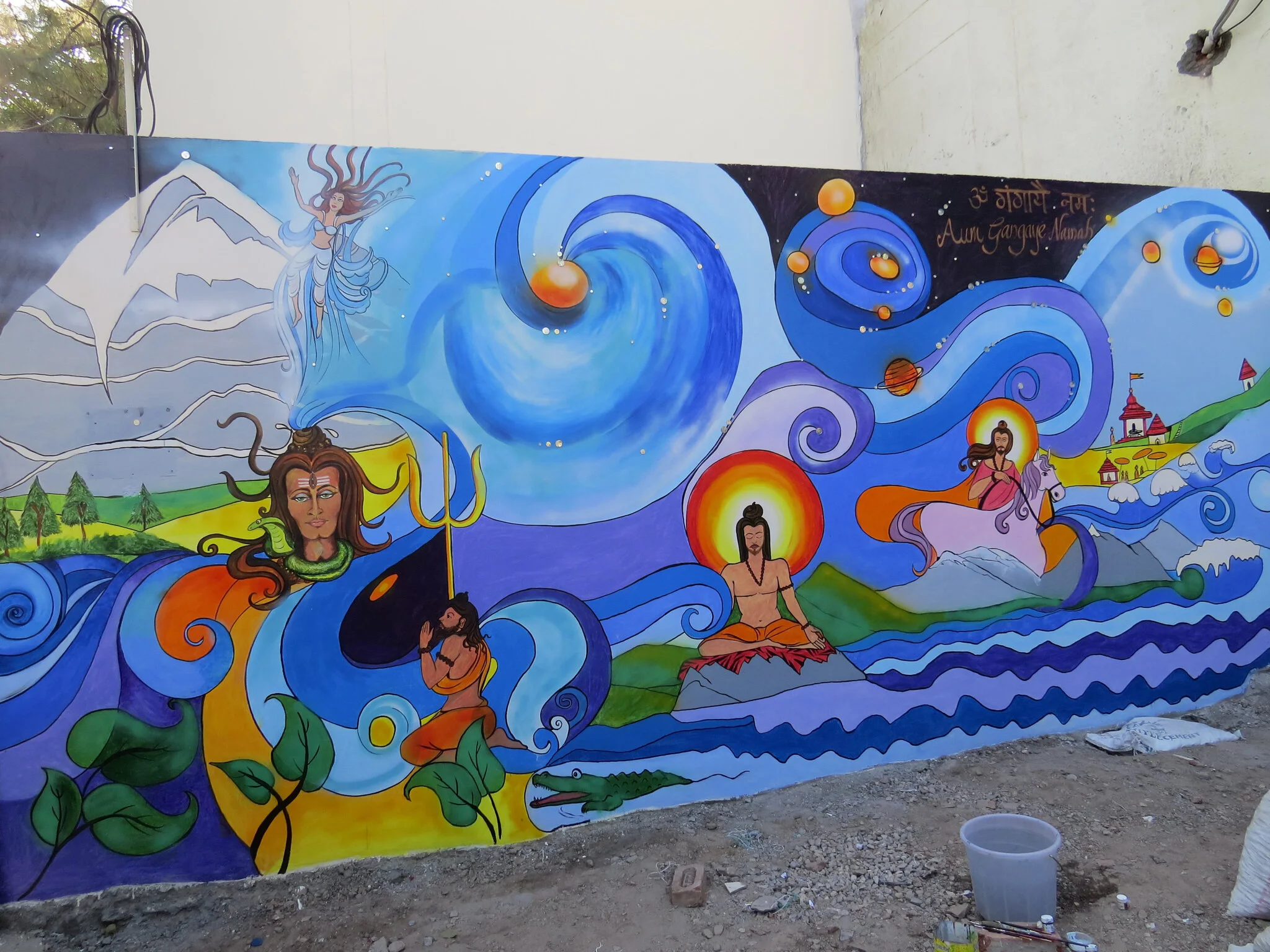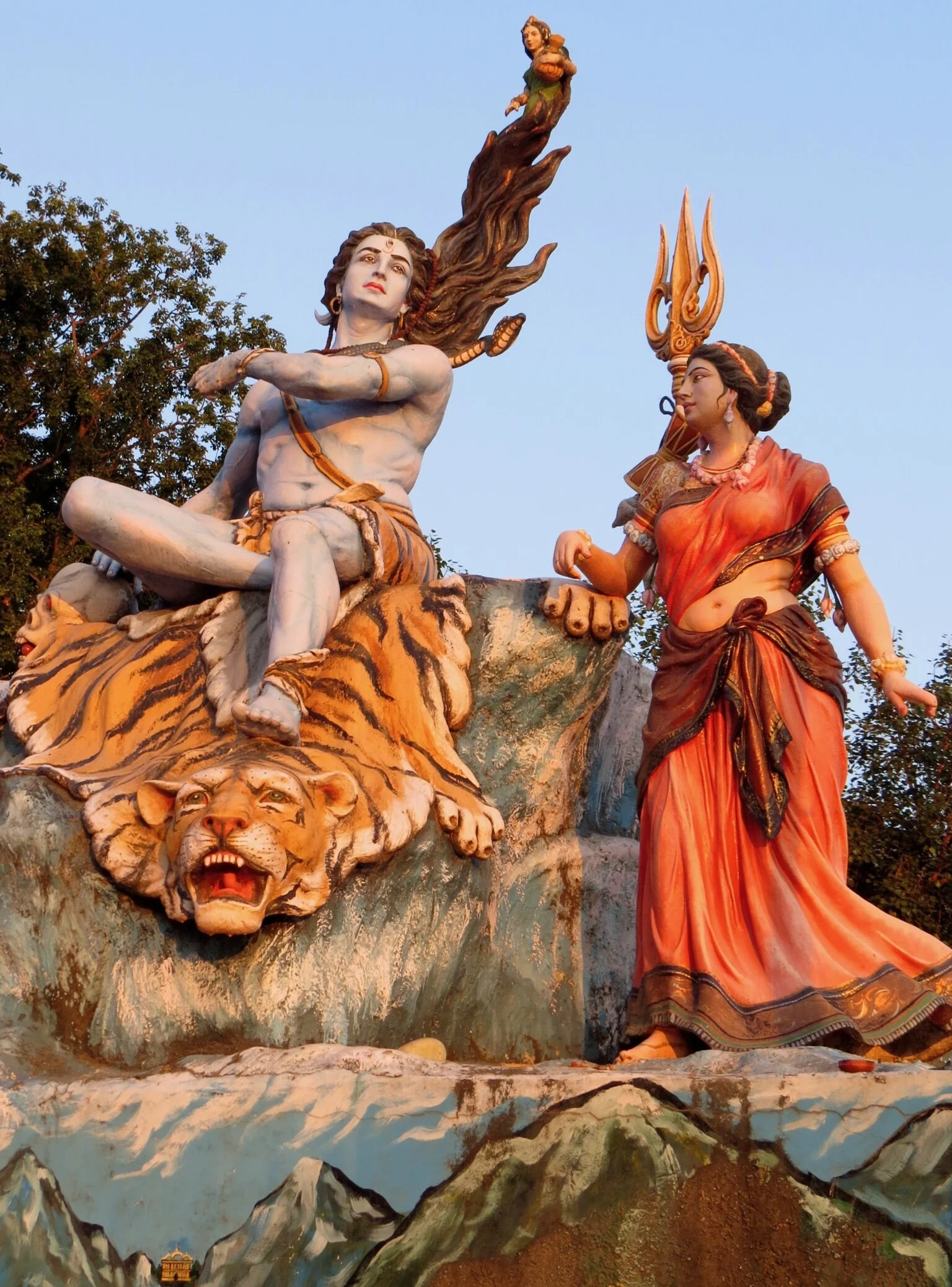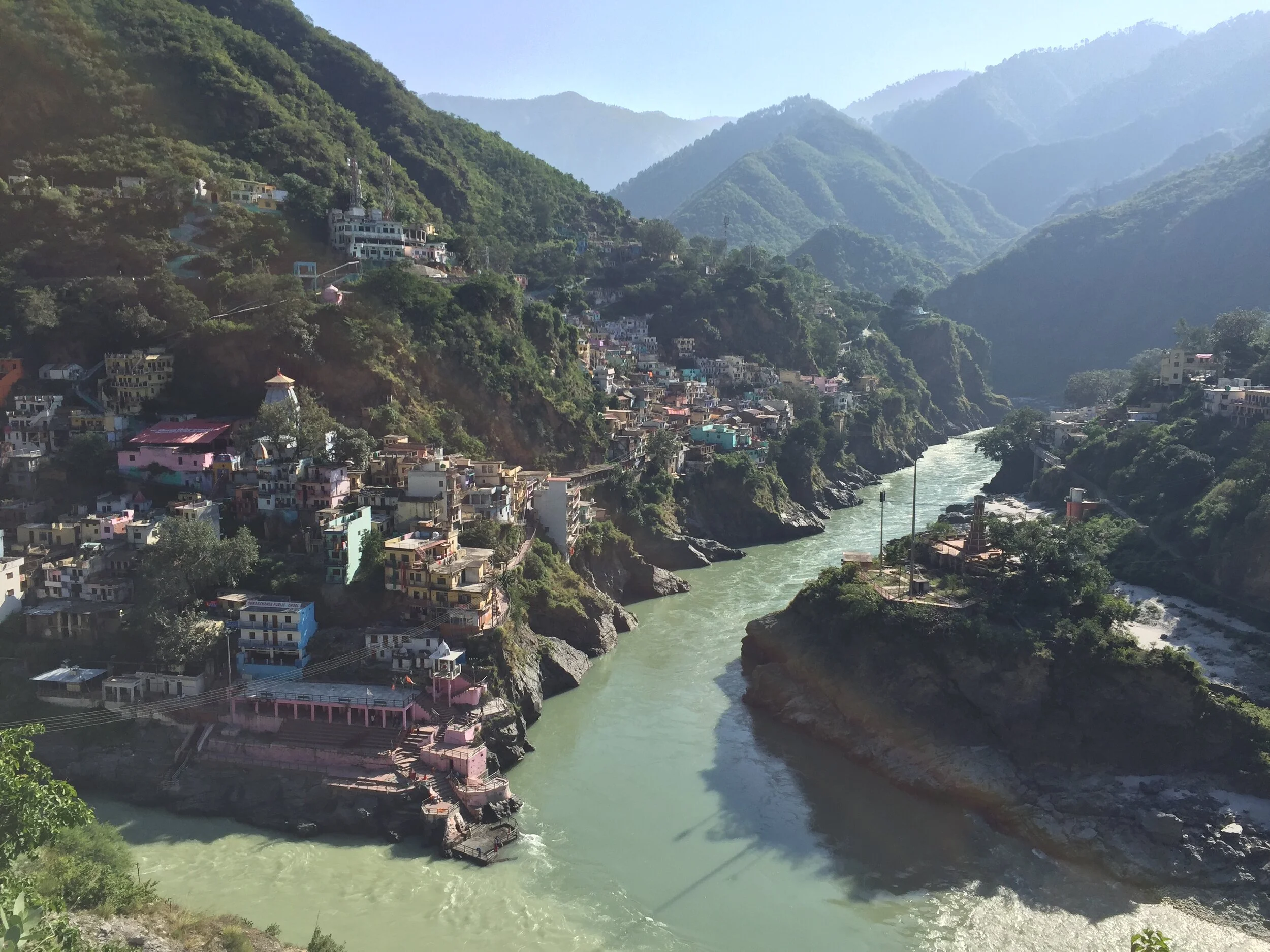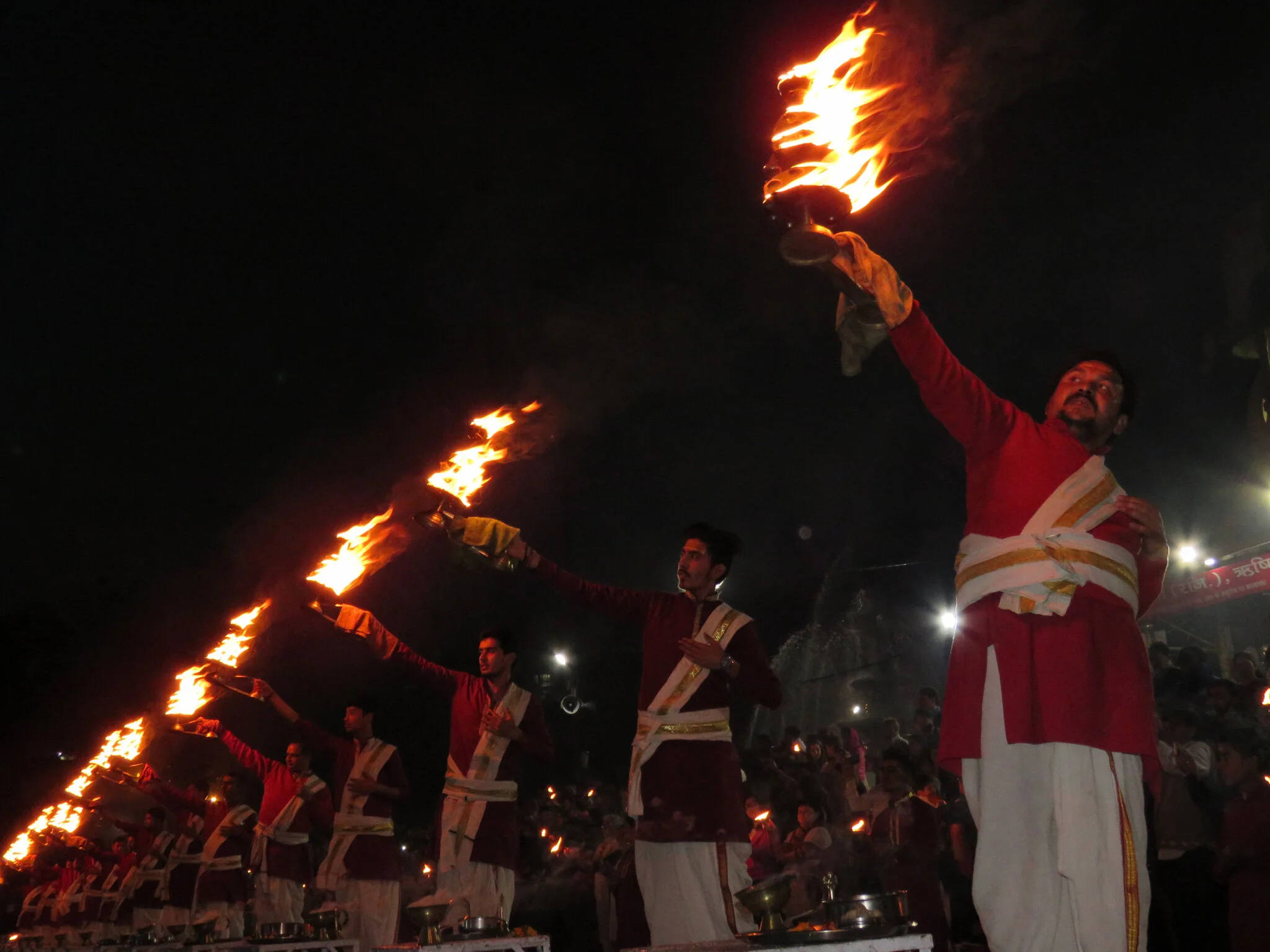Ganga
“Waters that come from heaven or those that wander dug from the earth, Or flowing free by Nature,
Bright, purifying, speeding to the ocean,
Here let those water goddesses protect me.”- RIG VEDA 7.49.2
The Sanatana Dharma has always encouraged the worship of water bodies and specially rivers. This holy country of Bharat has seven sacred rivers flowing through it. These are Ganga, Yamuna, Godavari, Saraswati, Narmada, Sindhu and Kaveri. When we do a puja we always invoke the waters of these rivers to flow into the Kalasha vessel which contains water.
“Gange cha Yamune chaiva, Godavari, Saraswati,
Narmade, Sindhu, Kaveri jalesmin sannidhim kuru.”
This verse is repeated by us before all rituals and also before we have a bath. This has a double purpose. It not only purifies the water but also reminds us of our national unity since all Hindus worship these rivers which stretch from the North to the South of India. India is known as the most sattwic place on earth due to the fact that these holy rivers go through it and purify it.
Each of these rivers is attached to one God and thus their waters have the ability to attract and transmit the frequencies of these seven deities. Ganga is connected with Lord Shiva, Yamuna with Lord Krishna, Narmada with Durga, Kaveri with Lord Dattatreya, Saraswati with Lord Ganesha and Godavari with Subramania and Sindhu with Lord Rama.
When we invoke these sacred rivers into the Kalasha vessel made of copper, these waters have the ability to attract and transmit the frequencies of these seven deities. The potency of these rivers is heightened by the fact that many great rishis and yogis have done tapas on their banks and transmitted their spiritual strength to them. This consecrated water from the pot is used for bathing the deity. This water is itself known as “tirtha” or holy water and is sprinkled on the devotees by which these frequencies are transmitted into the ecosphere. When it is drunk these divine frequencies will spread over the body and purify the energy body as well as the mind of the devotee.
In Vedic times the River Saraswati took predominance over the others. Today the Ganga has taken over this exalted position since the waters of the Saraswati disappeared into the desert. The very first mention of Ganga is found in the Rig Veda which says,
“Your ancient home, your auspicious friendship, O heroes, your wealth is on the banks of the Jahnavi (another name of the Ganga).”
RIG VEDA 3.58.6
The Ganga is considered as the holiest river in India. Traditionally she is supposed to have come from the constellation known as the Milky Way. One of the great kings of ancient India known as Bhagirata begged her to come down and bless his ancestors. It is believed that if we cremate our dead bodies and put the ashes into the River Ganga they will attain salvation. Ganga agreed to come to the earth but told Bhagirata that her fall from the sky to the earth would make the earth go off balance so he would have to find someone who could break her fall. Bhagirata then did penance to Lord Shiva and begged him to break her fall. He agreed and caught Ganga in his matted locks as she leapt from the sky to the earth. The Vanamali Ashram in Tapovan has a huge wall mural depicting this scene which can be seen from the road.
Mural at Vanamali Ashram
Shiva is said to have released only a trickle from his locks and this is the mighty river we see now. The place where Bhagirata did tapas to Ganga and Shiva is known as Gaumukh because the face of the glacier from which she gushes forth resembles a cow’s mouth. “Gau” means cow and “mukh” means face. The day on which she emerged from the glacier was the shukla saptami day in the month of Vaishaka. This is known as Ganga Saptami and she is worshipped by all on this day. Those who have been fortunate enough to be present at Gaumukh on this day say that exactly at midnight one can see millions of lights of different colours flashing from the gaping mouth of the glacier as she leaps forward. King Bhagirata is said to have guided her course to the ocean on his horse. Legend has it that in her tempestuous dance towards the plains she destroyed the ashram of the sage Jhanu. He was enraged but due to his great spiritual powers he is said to have drank all her water but since Bhagirata begged him, he released her through his ear and this is how she got the name Jahnavi – daughter of Jhanu Rishi.
Depiction of the scene at Triveni Ghat, Rishikesh
The Ganga reaches the plains at Rishikesh and until then she is known as Alakananda. The confluence of two or more rivers is known as a “sangam.” Some strong spiritual energy is created in such places and hence these spots are considered holy. There are three famous prayags or sangams on the Alakananda which are especially well-known. The first prayag on the route from Rishikesh up to Badrinath is called Devaprayag, where the river Bhageerathi coming from Gangotri meets the Alakananda. If you observe the water at the sangam (confluence) you will notice that the water of the Bhageerathi is almost black and the Alagananda is white and foamy. The next important prayag is Rudra Prayag where the River Mandakini coming from Kedarnath meets the Alagananda. The third one is known as Karna Prayag where the River Lidder joins the Alagananda coming from Badrinath.
Rudraprayag
On her way to the ocean she passes through many famous pilgrim spots of North India – Rishikesh, Haridwar, Varanasi, Prayag Raj or Triveni Sangam (Allahabad). At the Triveni Sangam the three most holy rivers of India - Ganga, Yamuna and Saraswathi are supposed to join. The River Saraswathi actually comes from the earth and joins the other two at the Sangam. So this place has extremely powerful vibrations. Rituals done to our ancestors at this place are very powerful. The grand festival known as the Kumbh Mela which takes place every twelve years is conducted here.
Now the question arises as to why the Hindus consider the Ganga to be holy. All Hindu “so called superstitions”, are backed by deep scientific reasons. The rishis were able to see that her water was so pure that no germs could stay in it for more than six hours! Actually it was the British East India Company which was responsible for verifying this in recent times. They found that when their ships were plying up and down from London to Calcutta the water of the Thames which they brought when they were coming became putrid by the time they reached Calcutta but the water from the mouth of the Ganga that they collected on their return journey remained absolutely pure and potable till the time they reached London. This made them investigate and they discovered that what the Indians believed was actually true and not a superstition. Even cholera germs could not remain alive in the water for more than a couple of hours! Ganga water never becomes putrid. In olden days when pilgrims from the south of India came to the north in order to pray at all the different places of pilgrimage they used to take a small pot of Ganga water back with them which they kept very safely in their houses. This would remain pure for years and it was the custom to put a few drops of the water on the tongue of any dying person in the house. Hence pilgrims from all over India come to Rishikesh and Haridwar to have a dip in the holy waters of the Ganga. As usual all the so- called superstitions of the Hindus have a scientific basis.
The Lakshman Jhula bridge is one of the first bridges to be built across the Ganga at Rishikesh. This was supposed to have been made by Rama’s brother Lakshmana when he came to do penance on the banks of the Ganga for having killed Ravana’s son- Indrajit.
Till this bridge was built the only way to cross the river was by boat. The boat still exists and it is a great experience to cross by it since there is a very strong current here and the boats take a slanting route in order to take advantage of the current. We feel we are part of the river and the spray keeps sprinkling on us. This stretch of the Ganga from Gangotri to Rishikesh is one of the few wild rivers left in the world so rafting is a great joy on this stretch.
The Ganga at Rishikesh is an enthralling sight. Her colours and moods change with the seasons. She is a bright startling blue during winter. The so called blue of the Danube is nothing compared with this blue. She is at her cleanest in Lakshman Jhula and people collect her water from here in order to take to their homes. However as she proceeds further she gets more and more polluted since there are so many factories that keep downloading their waste into her.
Ganga Arati
Our ancients realised that rivers are the arteries of a country and that is why they told us to revere them as goddesses. Of all these rivers the Ganga is the holiest and though we worship her with araties and offerings yet we fail to recognise the urgent need to keep her clean. All rivers have an innate ability to clean themselves as they flow but there comes a saturation point when they are no longer able to purify themselves. The Ganga is actually the purest of all rivers but even she is finding it difficult to keep herself clean. The Hindus have to stop preaching about things and start practicing what our religion tells us. There should be a concentrated effort to ensure that she is not constantly defiled by our waste products. For this our Prime Minister Modi has launched a huge attack to clean Ganga. Let us all join forces with him and ensure that this River goddess whom we call Mother is kept intact for future generations.
Jai Ganga Mayya!

